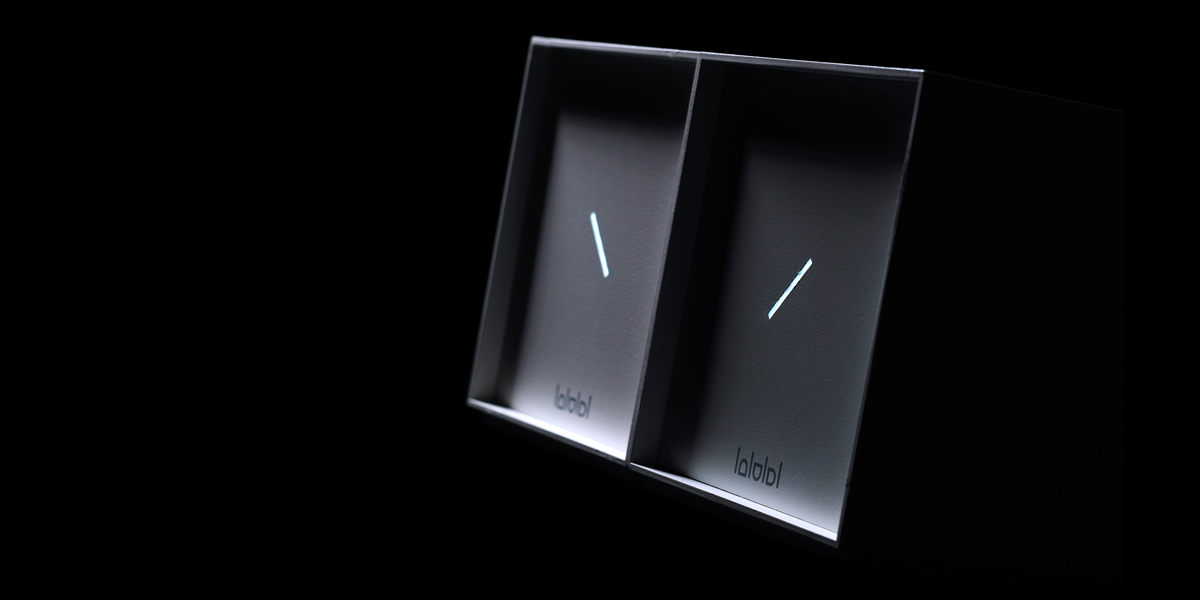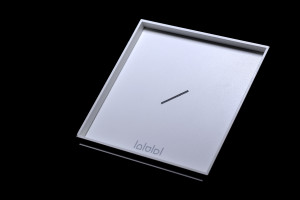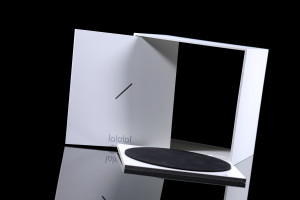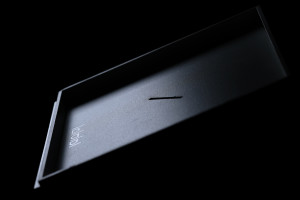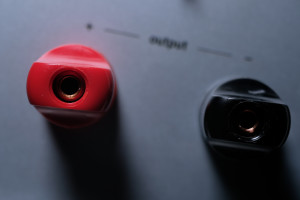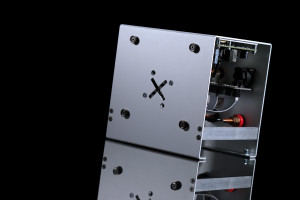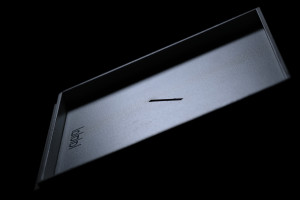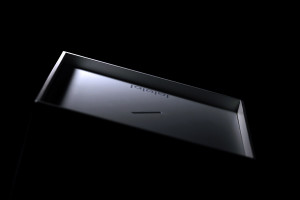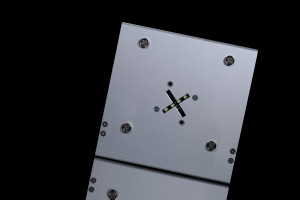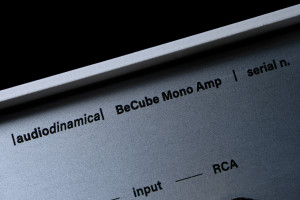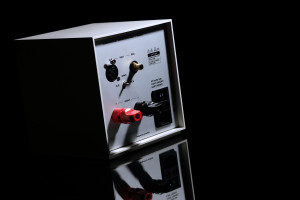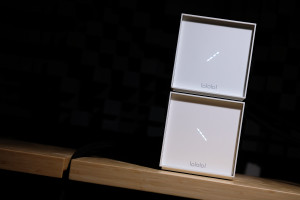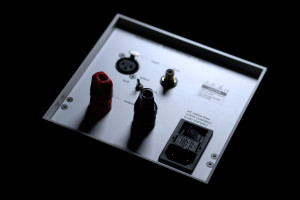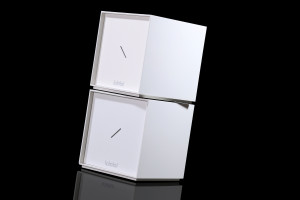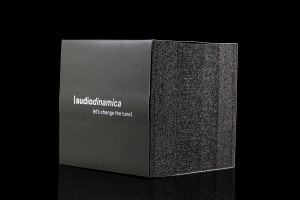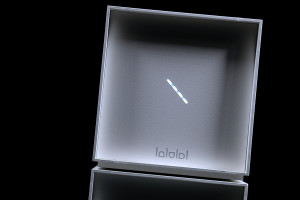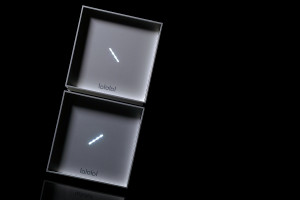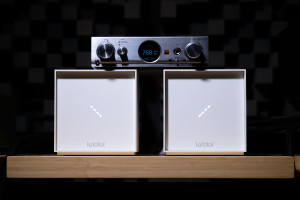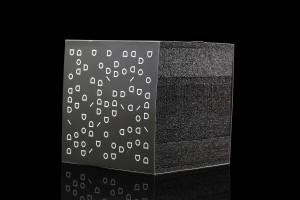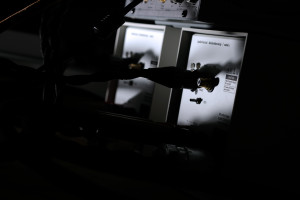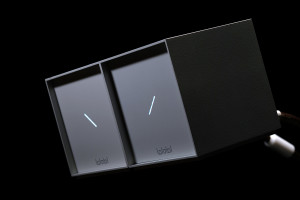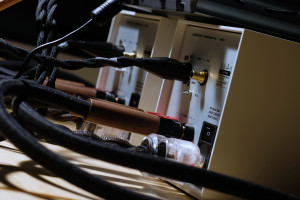Two white boxes. Small form factor. Stout power output. Italian origin. Sharp visuals. Reasonable price. Not possible? The manufacturer begs to differ, Audiodinamica BeCube power amps arrived to prove the point. Enjoy!
Introduction
Just as several recently released publications, this one also had its start at Munich’s High End show in May 2019. Visits at the M.O.C.’s hall area during the first day of the event became a sort of my routine over the years. That’s how at some point I landed in the booth occupied by the newly established Audiodinamica company from Italy, already briefly introduced in this report. Several similarly styled, visually minimalist, reasonably priced and functionally different compact cubes showcased in there formed a setup bonded with LS3/5A monitors, I can’t recall by which manufacturer exactly. In spite of inconveniences typical for open spaces and show conditions, solid sonics at the Italian exposition surely marked a good start. I left my card to open up a formal communication channel, from there one mail led to another and several months later two white mono amps – Audiodinamica BeCube – were sent my way in effect.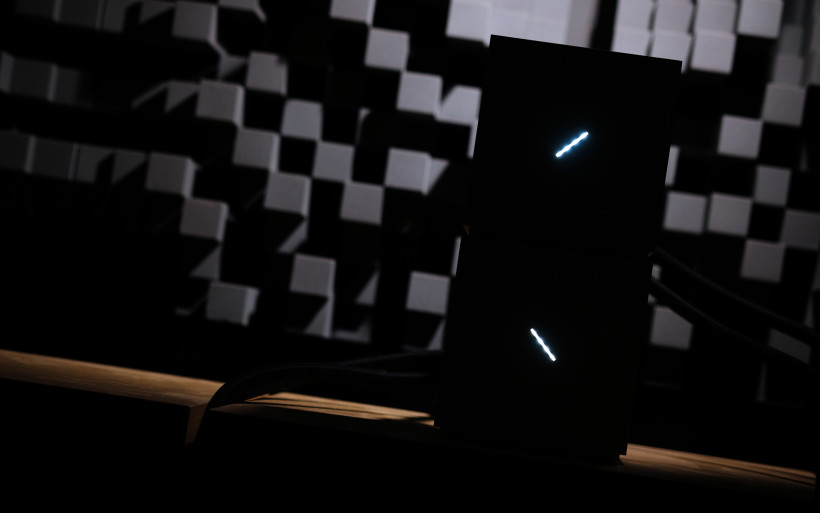 Today’s Audiodinamica is a conjoined effort of its three co-founders. Gianluca Sperti is responsible for product development and testing. Simple symmetric designs of low distortion and high dynamics are his favourite. The man studied engineering in Turin and London, in Milan he earned an MBA and for more than 15 years has been associated with the aerospace industry. In hope of building an amp capable of recreating what he’s always been into, namely various music genres best served at high SPL, he took the DIY route a decade ago. Gianluca described his feelings towards tubes, especially obscure industrial cases from the WWII era, as love and addiction. Upon asking about his favourite audio hardware, he listed high mass low power amps on duty with sensitive horn-loaded speakers, plus phono stages and DACs. His non-audio hobbies include snowboarding and windsurfing.
Today’s Audiodinamica is a conjoined effort of its three co-founders. Gianluca Sperti is responsible for product development and testing. Simple symmetric designs of low distortion and high dynamics are his favourite. The man studied engineering in Turin and London, in Milan he earned an MBA and for more than 15 years has been associated with the aerospace industry. In hope of building an amp capable of recreating what he’s always been into, namely various music genres best served at high SPL, he took the DIY route a decade ago. Gianluca described his feelings towards tubes, especially obscure industrial cases from the WWII era, as love and addiction. Upon asking about his favourite audio hardware, he listed high mass low power amps on duty with sensitive horn-loaded speakers, plus phono stages and DACs. His non-audio hobbies include snowboarding and windsurfing.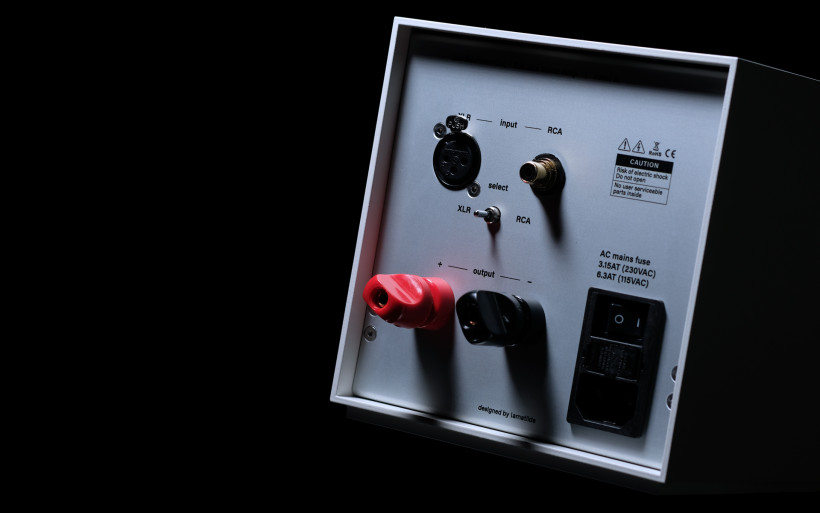 Testing and assembly are listed not only as Francesco Matera’s key tasks, but also his personal holy grail. He’s the Politecnico of Turin graduate engineer, for 17 years into environmental sector. That’s a long time for one’s professional roots to go deep, but Francesco’s life has always revolved around music. He had his way with singing before he could talk and at the age of 14 he got his first audio setup, which he partially toasted one month later. That British amp was a no-go anyway, so the search for something more suitable for the man’s privy aural needs started, 30 years by now and ticking. The last decade led to Francesco’s DIY skills developed and valve amps at their core. He gets no lesser satisfaction from live music intake, food, drinks, jogging and bikes, than he gets from everything vinyl, Audiodinamica’s own SUT deck and LS3/5A monitors. If all this sounds a wee bit dreamy, in fact the man labels himself as a dreamer.
Testing and assembly are listed not only as Francesco Matera’s key tasks, but also his personal holy grail. He’s the Politecnico of Turin graduate engineer, for 17 years into environmental sector. That’s a long time for one’s professional roots to go deep, but Francesco’s life has always revolved around music. He had his way with singing before he could talk and at the age of 14 he got his first audio setup, which he partially toasted one month later. That British amp was a no-go anyway, so the search for something more suitable for the man’s privy aural needs started, 30 years by now and ticking. The last decade led to Francesco’s DIY skills developed and valve amps at their core. He gets no lesser satisfaction from live music intake, food, drinks, jogging and bikes, than he gets from everything vinyl, Audiodinamica’s own SUT deck and LS3/5A monitors. If all this sounds a wee bit dreamy, in fact the man labels himself as a dreamer. Angelo Zilio is responsible for driving Audiodinamica’s sales and marketing strategy in the right direction. He graduated in International Business at the University of Turin, earned a MSc in International Marketing at the University of Berlin, an MBA at the ESCP Europe in Paris and a PhD at the University of Lyon. For 8 years he’s been working as an export manager in different countries, and for half that as a Marketing, Strategy and Management Professor at the University of Saint Etienne/Lyon. At some point Francesco and Gianluca presented their modular line stage plus headfi amp to Angelo, which he then used to listen to music as loudly as he pleased without hearing from his neighbours. Privately the man loves sail boats and is a chocolate connoisseur.
Angelo Zilio is responsible for driving Audiodinamica’s sales and marketing strategy in the right direction. He graduated in International Business at the University of Turin, earned a MSc in International Marketing at the University of Berlin, an MBA at the ESCP Europe in Paris and a PhD at the University of Lyon. For 8 years he’s been working as an export manager in different countries, and for half that as a Marketing, Strategy and Management Professor at the University of Saint Etienne/Lyon. At some point Francesco and Gianluca presented their modular line stage plus headfi amp to Angelo, which he then used to listen to music as loudly as he pleased without hearing from his neighbours. Privately the man loves sail boats and is a chocolate connoisseur.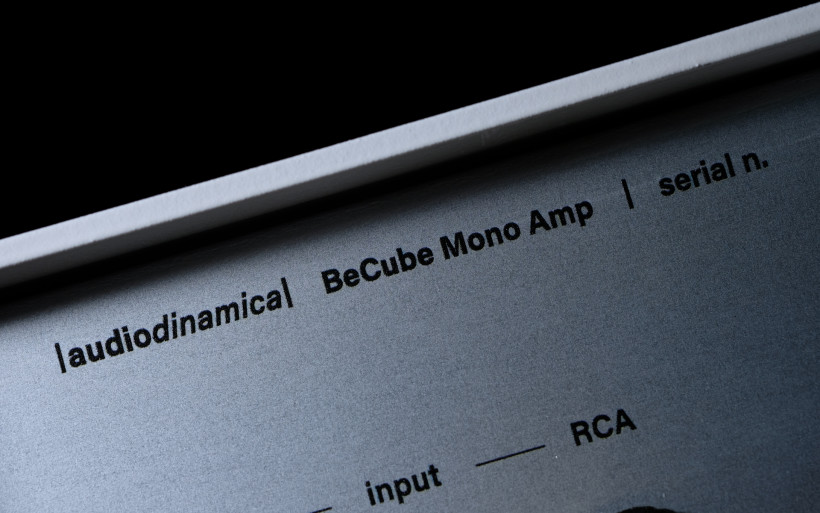 Audiodinamica is located in Turin and subject to the parent company IIA (aka Innovation In Audio) established in May 2017. Upon asking how they operate, Gianluca explained that each product under their banner is assembled in-house and that’s where all R&D happens; all simulations, PCB designs, prototyping, component selection, listening evaluations and QC. Services outsourced to local suppliers include casework, paint job, PCB printing, packaging etc. Team Audiodinamica also relies on the lamatilde design studio’s input in form of product styling and mechanical designs. This company’s staff not associated with audio are very much open-minded folks on this count, thus quite the source of inspiration for Gianluca and his colleagues.
Audiodinamica is located in Turin and subject to the parent company IIA (aka Innovation In Audio) established in May 2017. Upon asking how they operate, Gianluca explained that each product under their banner is assembled in-house and that’s where all R&D happens; all simulations, PCB designs, prototyping, component selection, listening evaluations and QC. Services outsourced to local suppliers include casework, paint job, PCB printing, packaging etc. Team Audiodinamica also relies on the lamatilde design studio’s input in form of product styling and mechanical designs. This company’s staff not associated with audio are very much open-minded folks on this count, thus quite the source of inspiration for Gianluca and his colleagues. Audiodinamica’s business model is direct, with just several exceptions where this route simply wouldn’t do. In our mail exchange Gianluca clearly saw pros and cons of each approach and expressed personal fondness towards retail prices as affordable as possible. Direct contact with customers and dialogue that oftentimes follows are key upshots to him. The man also quickly emerged as an individual perfectly aware of local distributors’ market penetration power far greater than just one company’s efforts. Domestic audio events, contacts with key press people and ads showcased in right places all are of value, but my Italian contact had all this figured out already. Everything I learnt up to this point seemed as sane as it was realistic. As for Audiodinamica’s future plans, completion of upcoming products (a line stage, a streamer/DAC combo, an integrated modular amp known as theSMA, a rack for all cubes and lastly speakers), production capacity increase, customer base expansion, show attendance and advertisement were listed. Upon asking about what exactly team Audiodinamica has been after in the first place, my Italian contact replied with visually modern high performance goods at affordable price, yet loaded with technology usually found far upper on the ladder. He had to have a grin on his face while writing this.
Audiodinamica’s business model is direct, with just several exceptions where this route simply wouldn’t do. In our mail exchange Gianluca clearly saw pros and cons of each approach and expressed personal fondness towards retail prices as affordable as possible. Direct contact with customers and dialogue that oftentimes follows are key upshots to him. The man also quickly emerged as an individual perfectly aware of local distributors’ market penetration power far greater than just one company’s efforts. Domestic audio events, contacts with key press people and ads showcased in right places all are of value, but my Italian contact had all this figured out already. Everything I learnt up to this point seemed as sane as it was realistic. As for Audiodinamica’s future plans, completion of upcoming products (a line stage, a streamer/DAC combo, an integrated modular amp known as theSMA, a rack for all cubes and lastly speakers), production capacity increase, customer base expansion, show attendance and advertisement were listed. Upon asking about what exactly team Audiodinamica has been after in the first place, my Italian contact replied with visually modern high performance goods at affordable price, yet loaded with technology usually found far upper on the ladder. He had to have a grin on his face while writing this.
Build
Each of two separate foam boxes delivered was put inside its own outer cardboard sleeve. This packaging scheme looked pro and was a pleasant break from typical cases, whereas generous foam shapes helped to have key components perfectly secure. One generic power cord plus a brief manual were found inside as well. Each BeCube amp measures (W x H x D) 150 x 150 x 150 mm and weighs mere three kilograms. Very high power output (130/250wpc into 8/4Ω loads respectively at 1kHz, 1% THD) alone tells exactly what the product is and the following specs seal the deal. THD+N lesser than 0.0024% at 100w. Output noise below 30uVrms. Output/input impedance of 1.5mΩ/47kΩ respectively. FR of 10Hz-50kHz. 350w of max power consumption. Considering today’s petite footprint, It’d be silly to expect anything other than class D.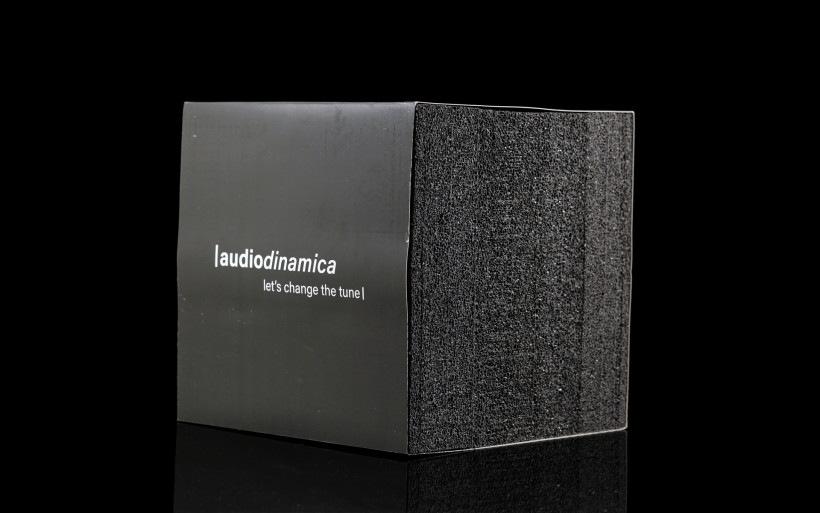 Upon asking about Audiodinamica’s design, Gianluca explained that, in pursuit of visuals as simple as possible, all three co-owners were led to a simple cubic form, as universal as it was practical. Team Audiodinamica said nay to strange shapes, curved walls and heavy machining. Each BeCube’s chassis is bolted together by four screws found at its underbelly plus two inner reinforcing brackets, which leaves any visible fasteners at the door. The result is utmost minimalist and safe. As a proper calss D specimen, today’s is as compact as it can be to fit its key internals, it runs cool even under significant load and occupies very little shelf space. There are six basic colour options available, some at extra cost. If that’s not enough however, the whole RAL palette is at one’s disposal. In addition, BeCube’s outer shell and removable face can have different paint jobs applied, which introduces an ocean of possible visual scenarios.
Upon asking about Audiodinamica’s design, Gianluca explained that, in pursuit of visuals as simple as possible, all three co-owners were led to a simple cubic form, as universal as it was practical. Team Audiodinamica said nay to strange shapes, curved walls and heavy machining. Each BeCube’s chassis is bolted together by four screws found at its underbelly plus two inner reinforcing brackets, which leaves any visible fasteners at the door. The result is utmost minimalist and safe. As a proper calss D specimen, today’s is as compact as it can be to fit its key internals, it runs cool even under significant load and occupies very little shelf space. There are six basic colour options available, some at extra cost. If that’s not enough however, the whole RAL palette is at one’s disposal. In addition, BeCube’s outer shell and removable face can have different paint jobs applied, which introduces an ocean of possible visual scenarios.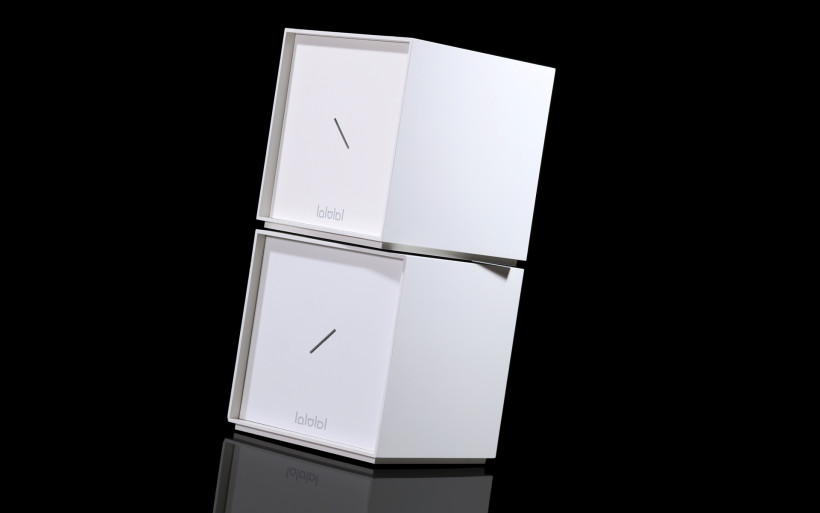 Each mono amp’s slightly concaved aluminium front sports a diagonal opening loaded with a white LED stripe with interesting artwork underneath. The product’s both cheeks plus top and bottom surfaces form a solid sleeve with a plate on its underbelly. A rubber round shape found in there breaks the usual routine based on footers or spikes. Each cube’s rear is occupied by an IEC inlet with the main on/off switch and a self-replaceable fuse, whereas two available inputs – one RCA and one XLR – neighbour with their selector knob located just below. Mundorf’s quality speaker terminals found a bit lower are of the exact same type as in my far costlier Trilogy 925 integrated deck. All things considered, the product looks great, is nicely put together and has everything it should. If anything, some customers would be happy about the option to defeat LEDs on its front, but that’s a subjective matter. Personally I don’t mind.
Each mono amp’s slightly concaved aluminium front sports a diagonal opening loaded with a white LED stripe with interesting artwork underneath. The product’s both cheeks plus top and bottom surfaces form a solid sleeve with a plate on its underbelly. A rubber round shape found in there breaks the usual routine based on footers or spikes. Each cube’s rear is occupied by an IEC inlet with the main on/off switch and a self-replaceable fuse, whereas two available inputs – one RCA and one XLR – neighbour with their selector knob located just below. Mundorf’s quality speaker terminals found a bit lower are of the exact same type as in my far costlier Trilogy 925 integrated deck. All things considered, the product looks great, is nicely put together and has everything it should. If anything, some customers would be happy about the option to defeat LEDs on its front, but that’s a subjective matter. Personally I don’t mind. Audiodinamica BeCube is based on class D modules by Hypex. Gianluca explained that he got familiar with the nCore range in the past during other projects he did, and has found its representatives solid on performance, reliability, build quality and overall engineering. As he put it, the Hypex route was also a natural choice due to efficiency and size as BeCube’s main limiting factor. I was also informed that the key design principle behind this review’s product was simplicity and that’s how it looks like from the inside. The main IEC inlet and an input switching board aside, one self-contained high-performance fully balanced nCore multi tasker per box runs the whole show. Gianluca informed me that there was no need to modify these parts. He considered a slightly lower gain versus stock 25dB, which didn’t happen due to Audiodinamica’s own line stage set at 9dB. This assignment is in fact my first adventure with Hypex modules. Neither I’ve heard them dressed in costlier nor more affordable clothes, which is why I can’t say if minting your own machine based on the same OEM boards as found in today’s would result in similar sonics. In any case, that’s beyond my scope, on the contrary to BeCube’s performance. It’s high time to tackle this subject.
Audiodinamica BeCube is based on class D modules by Hypex. Gianluca explained that he got familiar with the nCore range in the past during other projects he did, and has found its representatives solid on performance, reliability, build quality and overall engineering. As he put it, the Hypex route was also a natural choice due to efficiency and size as BeCube’s main limiting factor. I was also informed that the key design principle behind this review’s product was simplicity and that’s how it looks like from the inside. The main IEC inlet and an input switching board aside, one self-contained high-performance fully balanced nCore multi tasker per box runs the whole show. Gianluca informed me that there was no need to modify these parts. He considered a slightly lower gain versus stock 25dB, which didn’t happen due to Audiodinamica’s own line stage set at 9dB. This assignment is in fact my first adventure with Hypex modules. Neither I’ve heard them dressed in costlier nor more affordable clothes, which is why I can’t say if minting your own machine based on the same OEM boards as found in today’s would result in similar sonics. In any case, that’s beyond my scope, on the contrary to BeCube’s performance. It’s high time to tackle this subject.
Sound
To review Audiodinamica BeCube monos, my daily platform had to be decomposed and reworked. As per usual, a fidata HFAS-S10U used as a storage and transport passed all files to LampizatOr’s Pacific DAC (KR Audio T-100/Living Voice 300B + KR Audio 5U4G Ltd. Ed.). From there a Thöress DFP took over to send the signal to today’s mono amps connected to Boenicke W11 SE+ with the same manufacturer’s S3 cables in-between. All key components were powered via LessLoss C-MARC cords from my GigaWatt PC-3 SE EVO+ conditioner, bonded with the main in-wall outlet via the LC-3 EVO cable also by GigaWatt. Two sets of Amber-modded Excellence ICs by Audiomica Laboratory linked all hardware. Forza AudioWorks XLR ICs were used as supports too. iFi audio’s iGalvanic3.0, micro iUSB3.0 and three Mercury3.0 cables all were on duty in-between the Japanese server/streamer/transport and my DAC. However, listed chain very quickly struck me as an overkill scenario far from possible. I had several tools far more fitting for the job. Shortly prior to this assignment I knew that my usual hardware was a stretch. At some point it stepped in just to ease my own curiosity, but one good look at my far more sanely priced home rig based on Boenicke W5 monitors, AMR DP-777 SE DAC and NuForce STA-200 power amp, was all it took to devise the abduction plan. Of all devices I had available, that petite and no longer manufactured deck by Optoma/NuForce was the closest thing to Audiodinamica’s cubes on functionality, specs and price, thus I snatched it on my way to the HQ.
Shortly prior to this assignment I knew that my usual hardware was a stretch. At some point it stepped in just to ease my own curiosity, but one good look at my far more sanely priced home rig based on Boenicke W5 monitors, AMR DP-777 SE DAC and NuForce STA-200 power amp, was all it took to devise the abduction plan. Of all devices I had available, that petite and no longer manufactured deck by Optoma/NuForce was the closest thing to Audiodinamica’s cubes on functionality, specs and price, thus I snatched it on my way to the HQ.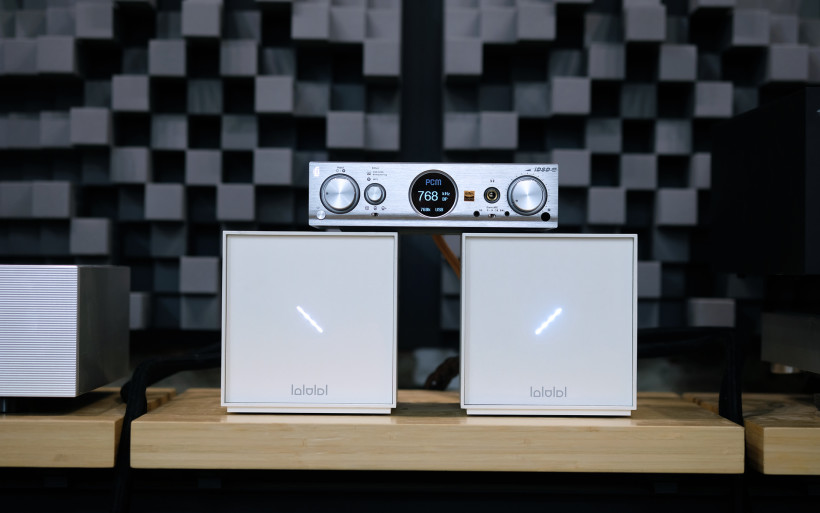 My rack, conditioner, power cables and freshly acquired Swiss W11 SE+ floorstanders had to stay. I simply had no suitable alternatives and the same story was with fidata’s machine as the only music storage on duty, but Lampizator’s top dog and Reinhard’s DFP line stage were discarded. To kill these two birds with just one stone, iFi audio’s Pro iDSD stepped in as the primary DAC and handy volume regulator. Due to BeCube’s fully balanced architecture it made sense to have the versatile and also balanced Brit engaged, but as a transistor affair with all its digital filters bypassed for maxed out transparency. To further trim cost, Portento’s Copper Signature cable replaced my far costlier and more complex USB chain.
My rack, conditioner, power cables and freshly acquired Swiss W11 SE+ floorstanders had to stay. I simply had no suitable alternatives and the same story was with fidata’s machine as the only music storage on duty, but Lampizator’s top dog and Reinhard’s DFP line stage were discarded. To kill these two birds with just one stone, iFi audio’s Pro iDSD stepped in as the primary DAC and handy volume regulator. Due to BeCube’s fully balanced architecture it made sense to have the versatile and also balanced Brit engaged, but as a transistor affair with all its digital filters bypassed for maxed out transparency. To further trim cost, Portento’s Copper Signature cable replaced my far costlier and more complex USB chain.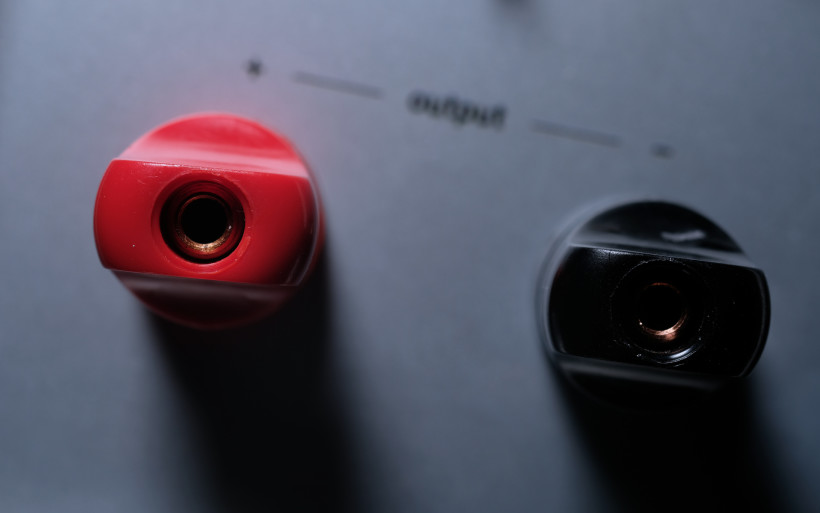 The key platform assembled included fidata, Pro iDSD, BeCube monos on rotation with the STA-200 and then Boenicke W11 SE+. Sven’s S3 cable finished with BFA-styled bananas had to join the party, though. The original plan involved the LessLoss C-MARC for speakers, but the NuForce’s speaker taps had no room to easily accommodate spade terminations. It was either the S3 overkill or bare wire, not present at my place. In any case, the primary goal was to have today’s flavor mapped during its skirmish versus the STA-200. Once this base was covered, petite Italian cubes were then replaced by Kinki Studio’s EX-M1 integrated, fed by the same DAC with its volume control naturally defeated. Then team BeCube was briefly fronted by Lampizator Pacific and Thöress DFP as the most kosher option available, just because.
The key platform assembled included fidata, Pro iDSD, BeCube monos on rotation with the STA-200 and then Boenicke W11 SE+. Sven’s S3 cable finished with BFA-styled bananas had to join the party, though. The original plan involved the LessLoss C-MARC for speakers, but the NuForce’s speaker taps had no room to easily accommodate spade terminations. It was either the S3 overkill or bare wire, not present at my place. In any case, the primary goal was to have today’s flavor mapped during its skirmish versus the STA-200. Once this base was covered, petite Italian cubes were then replaced by Kinki Studio’s EX-M1 integrated, fed by the same DAC with its volume control naturally defeated. Then team BeCube was briefly fronted by Lampizator Pacific and Thöress DFP as the most kosher option available, just because.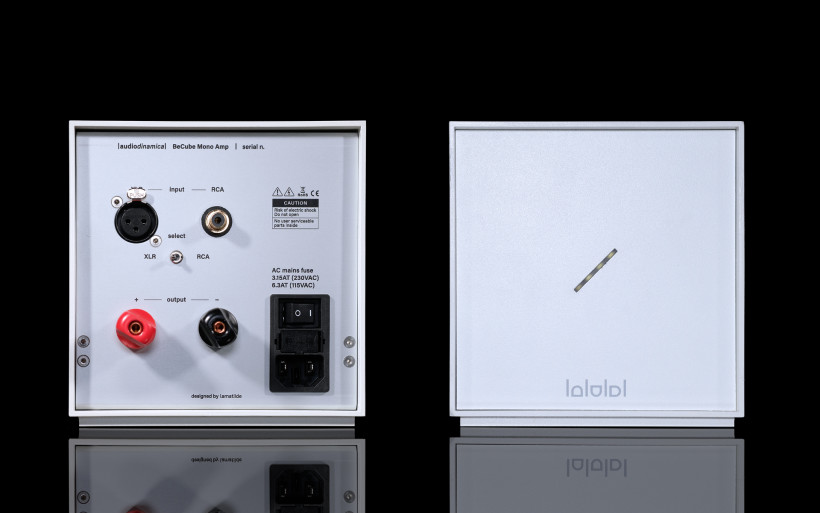 NuForce STA-200 has been on duty in my home kit not by an accident, the no longer manufactured Job 225 stereo power amp by Job Electronics sported a very similar circuit. But most importantly, both these cases spelled Goldmund’s proprietary technology in action. The STA-200 was in fact marketed as a device made in cooperation with this Swiss luxury house, and purchased by yours truly past his own experience with the Job 225, please take a look here. However, the STA-200 and 225 weren’t alike voiced. The former was rounder, denser, milder and a tad warmer, whereas the latter was less grounded yet snappier, more agile, open, detailed and in general posher. Nonetheless, my ears have found both as equally loaded with that unmistakable Swiss seasoning; smoothness, clarity, tactility, insight, evenness, effortlessness, upstairs refinement and overall maturity typically reserved for far costlier products. All this landed the STA-200 the position of a spot on benchmark for this review’s main dish.
NuForce STA-200 has been on duty in my home kit not by an accident, the no longer manufactured Job 225 stereo power amp by Job Electronics sported a very similar circuit. But most importantly, both these cases spelled Goldmund’s proprietary technology in action. The STA-200 was in fact marketed as a device made in cooperation with this Swiss luxury house, and purchased by yours truly past his own experience with the Job 225, please take a look here. However, the STA-200 and 225 weren’t alike voiced. The former was rounder, denser, milder and a tad warmer, whereas the latter was less grounded yet snappier, more agile, open, detailed and in general posher. Nonetheless, my ears have found both as equally loaded with that unmistakable Swiss seasoning; smoothness, clarity, tactility, insight, evenness, effortlessness, upstairs refinement and overall maturity typically reserved for far costlier products. All this landed the STA-200 the position of a spot on benchmark for this review’s main dish.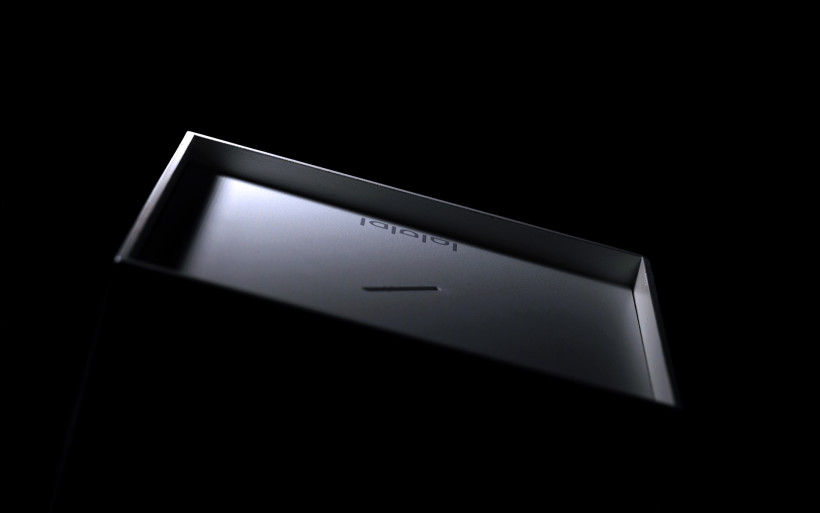 The BeCube versus STA-200 case was an interesting match. It quickly turned out that these two products had several foundational things in common. Both proved to be capable of driving the W11 SE+ to quite an extent. This translated to no struggle downstairs or any signs of distortion in each case, even at SPL sufficient enough to literally go deaf after minutes. The two contestants delivered pristine backdrop and were found as equally clean up close when no playback was on. From this angle it was a draw. If anything, Audiodinamica’s product mildly burped upon powering it on regardless of hardware connected, whereas the STA-200 remained silent.
The BeCube versus STA-200 case was an interesting match. It quickly turned out that these two products had several foundational things in common. Both proved to be capable of driving the W11 SE+ to quite an extent. This translated to no struggle downstairs or any signs of distortion in each case, even at SPL sufficient enough to literally go deaf after minutes. The two contestants delivered pristine backdrop and were found as equally clean up close when no playback was on. From this angle it was a draw. If anything, Audiodinamica’s product mildly burped upon powering it on regardless of hardware connected, whereas the STA-200 remained silent.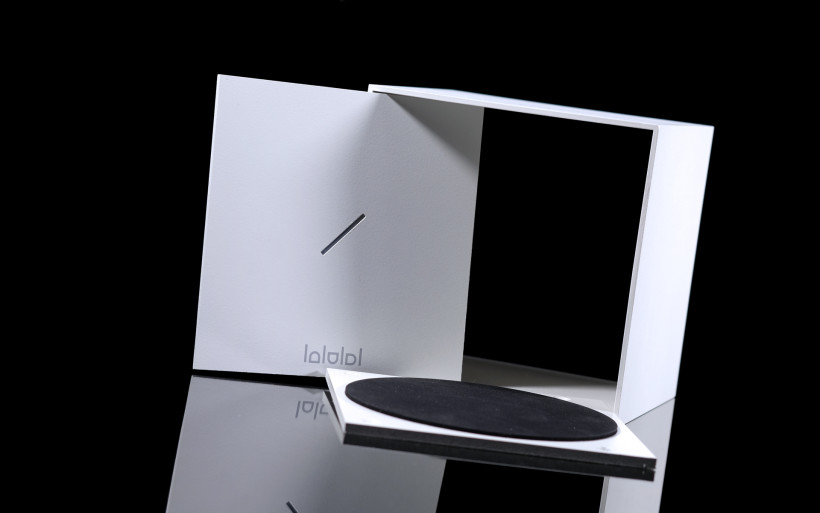 The more back and forths were in the past, the more disparities between the two specimens emerged, but this gap wasn’t staggering even at the very end of critical auditions. Even though it internally was, Audiodinamica BeCube struck me as not a typical class D representative. Early on I assumed that such topology dressed in a budged petite package is a working horse more than anything else; a snappy product with lots of torque, yet pale on textures, chiseled, possibly grainy, lifeless and with emphasized details. In short, an amp surely not capable of extracting emotions out of music without sundry of carefully matched companions nearby. The Italian didn’t behave like so at my place; it stomped on my introductory guesswork and left stereotypical class D voicing at the door. Good.
The more back and forths were in the past, the more disparities between the two specimens emerged, but this gap wasn’t staggering even at the very end of critical auditions. Even though it internally was, Audiodinamica BeCube struck me as not a typical class D representative. Early on I assumed that such topology dressed in a budged petite package is a working horse more than anything else; a snappy product with lots of torque, yet pale on textures, chiseled, possibly grainy, lifeless and with emphasized details. In short, an amp surely not capable of extracting emotions out of music without sundry of carefully matched companions nearby. The Italian didn’t behave like so at my place; it stomped on my introductory guesswork and left stereotypical class D voicing at the door. Good. Based on my memory I’d label the Job 225 as the most agile, open, tactile and ethereal. The STA-200 would secure the safely universal place in the middle, whereas BeCube monos would land at the opposite end of the same scale but not too far off from its center. This description naturally renders Audiodinamica’s specimen as the chunkiest and warmest of all products listed. But the Job 225 aside, that’s how the Italian sounded versus the STA-200 indeed; it clearly had its downstairs beefier and rounder to score extra points on bass presence and bloom, but it also went deeper by several steps. Not by much in the grand scheme of things, but sufficiently enough for the W11 SE+ to slam sensibly harder. These floorstanders enjoy stout power feed, which naturally put the BeCube in the pole position. In return, Goldmund’s direct beneficiary STA-200 came through as tonally more even. In that sense today’s was a bit boosted hence more juvenile, but it so happened that my speakers favoured this approach a fair bit more.
Based on my memory I’d label the Job 225 as the most agile, open, tactile and ethereal. The STA-200 would secure the safely universal place in the middle, whereas BeCube monos would land at the opposite end of the same scale but not too far off from its center. This description naturally renders Audiodinamica’s specimen as the chunkiest and warmest of all products listed. But the Job 225 aside, that’s how the Italian sounded versus the STA-200 indeed; it clearly had its downstairs beefier and rounder to score extra points on bass presence and bloom, but it also went deeper by several steps. Not by much in the grand scheme of things, but sufficiently enough for the W11 SE+ to slam sensibly harder. These floorstanders enjoy stout power feed, which naturally put the BeCube in the pole position. In return, Goldmund’s direct beneficiary STA-200 came through as tonally more even. In that sense today’s was a bit boosted hence more juvenile, but it so happened that my speakers favoured this approach a fair bit more.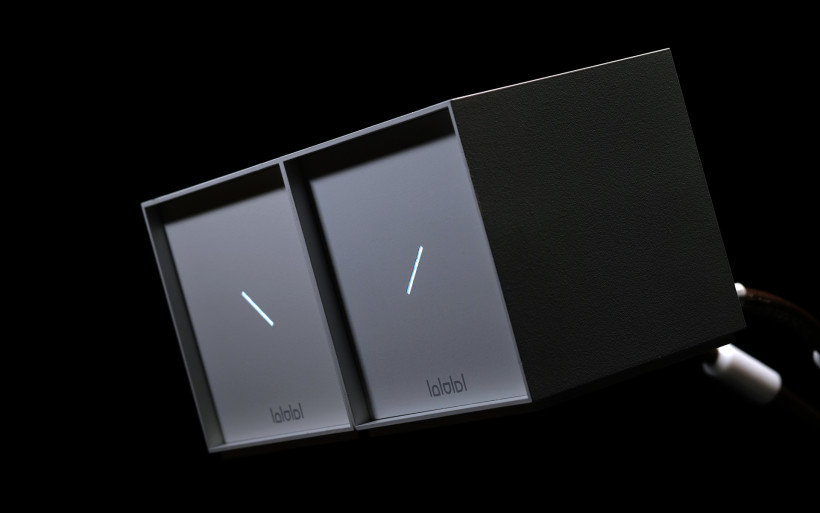 Shifts from the STA-200 to BeCube and vice versa were as equally enjoyable. The former’s lesser heft nicely complimented everything above to land a spot on balance and introduce finely crafted blend of typical Swiss virtues. In return, the Italian’s more gravitational attitude supported via generous power output, translated to sensibly more air more wildly propagated in my room. Audiodinamica’s cubes filled spatially grander and deeper images with virtual postures bigger and served more closely, which was yet another thing my floorstanders thrived upon. Musical backdrop of truly big proportions, wide dynamic contrasts and freedom from any hints of dilution, all contributed to the clearly jumpy and very much alive outcome. But execution by two still fairly compact speakers bonded with two petite monos landed the “Aha, you got me there” effect. It’d leave any person puzzled. Truth told, several visitors at my digs already were.
Shifts from the STA-200 to BeCube and vice versa were as equally enjoyable. The former’s lesser heft nicely complimented everything above to land a spot on balance and introduce finely crafted blend of typical Swiss virtues. In return, the Italian’s more gravitational attitude supported via generous power output, translated to sensibly more air more wildly propagated in my room. Audiodinamica’s cubes filled spatially grander and deeper images with virtual postures bigger and served more closely, which was yet another thing my floorstanders thrived upon. Musical backdrop of truly big proportions, wide dynamic contrasts and freedom from any hints of dilution, all contributed to the clearly jumpy and very much alive outcome. But execution by two still fairly compact speakers bonded with two petite monos landed the “Aha, you got me there” effect. It’d leave any person puzzled. Truth told, several visitors at my digs already were.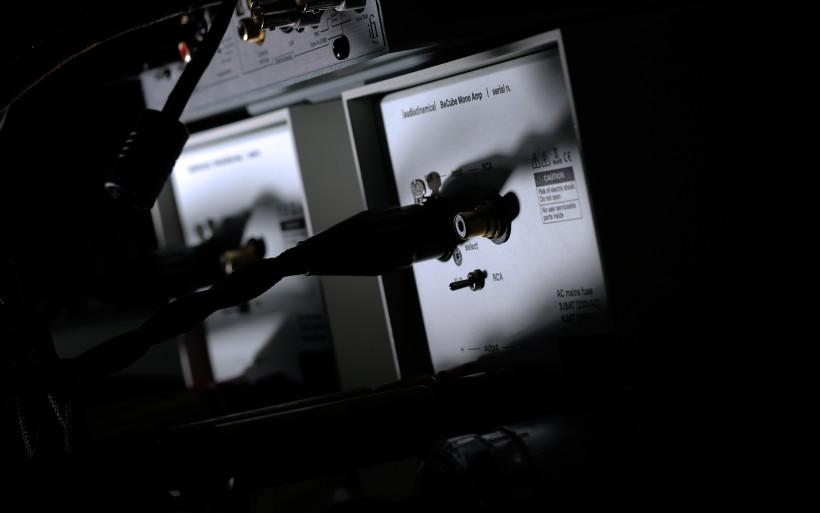 On dynamic potency, shove, otherworldly landscapes and other party factors, many ears would map the STA-200 as not necessarily restricted or limited, but somewhat smaller versus the BeCube. In that sense the former was more humble and civilized indeed, but in favour of overall refinement, balance and Swiss expressiveness. The NuForce and several other similarly voiced machines (a while ago Srajan listed Job 225, LinnenberG Liszt and Bakoon AMP-13R), are never flashy or excessive. All this lot shares exploded bandwidth, Exicon’s output devices and top level circuit cleverness, whereas sophistication and uniformly high sonic notes are the audible effect. The STA-200 doesn’t fit in this group as nicely as the Job 225 did, but it’s surely somewhere in the sonic ballpark. Audiodinamica BeCube clearly wasn’t, in my system it shifted towards gravity and earthly charm more than textural complexity and palpable humidity served in rather lightsome fashion. It boosted downstairs heft to elevate its bouncy muscular disposition and score lesser notes on tonal evenness. It favoured soft paintbrush strokes over pointy pencil swings to land virtual sound sources softer, rounder, bigger and less chiseled than utmost precisely outlined, isolated and clear. It operated via higher tonal temperature and heft more than balanced blend of everything involved and inner expressiveness served the posh way. Speaking age, today’s was several years younger than the STA-200. Given the former’s sticker, that’s hardly a con. It’s far more fitting to label its priority list as differently organized.
On dynamic potency, shove, otherworldly landscapes and other party factors, many ears would map the STA-200 as not necessarily restricted or limited, but somewhat smaller versus the BeCube. In that sense the former was more humble and civilized indeed, but in favour of overall refinement, balance and Swiss expressiveness. The NuForce and several other similarly voiced machines (a while ago Srajan listed Job 225, LinnenberG Liszt and Bakoon AMP-13R), are never flashy or excessive. All this lot shares exploded bandwidth, Exicon’s output devices and top level circuit cleverness, whereas sophistication and uniformly high sonic notes are the audible effect. The STA-200 doesn’t fit in this group as nicely as the Job 225 did, but it’s surely somewhere in the sonic ballpark. Audiodinamica BeCube clearly wasn’t, in my system it shifted towards gravity and earthly charm more than textural complexity and palpable humidity served in rather lightsome fashion. It boosted downstairs heft to elevate its bouncy muscular disposition and score lesser notes on tonal evenness. It favoured soft paintbrush strokes over pointy pencil swings to land virtual sound sources softer, rounder, bigger and less chiseled than utmost precisely outlined, isolated and clear. It operated via higher tonal temperature and heft more than balanced blend of everything involved and inner expressiveness served the posh way. Speaking age, today’s was several years younger than the STA-200. Given the former’s sticker, that’s hardly a con. It’s far more fitting to label its priority list as differently organized.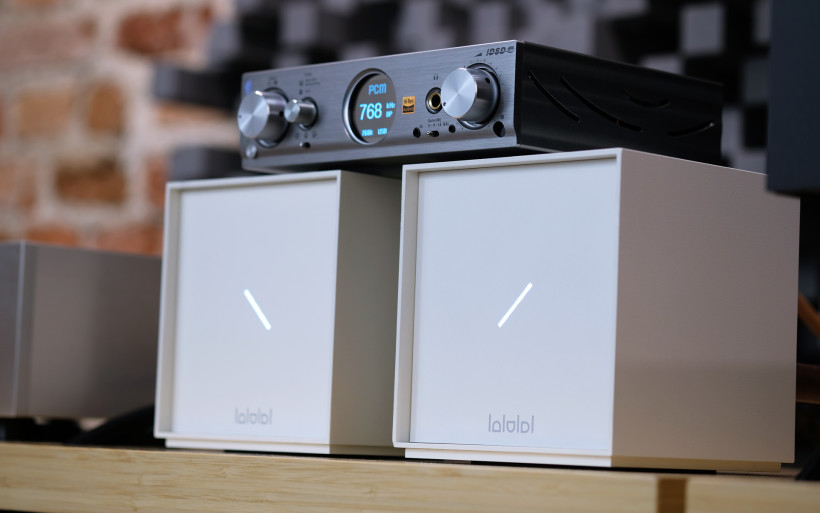 The STA-200’s approach my ears mapped as a bit more cheerful, fluent, airier and brighter, whereas the BeCube provided the experience thicker, more intense and, due to instruments and vocals grander on size and served more closely, also positioned higher on intimacy and spatial presence. However it went unnoticed that, in my setup, both compared specimens sported pristine backdrop and were not garish at all. Not in the slightest, not even once. Their audibly distinctive core flavours and fit in specific hardware scenarios were subjects up to a debate. But the foundational work the STA-200 and BeCube did, quality wise was on par. What I have on mind here is technical execution and voicing solid enough to avoid traps such as significant fuzz, bloat, twitch upstairs, resolution drop, limited imaging, flatness or extreme moves in any direction in particular. No such thing occurred in either case, which was quite the achievement for their coin.
The STA-200’s approach my ears mapped as a bit more cheerful, fluent, airier and brighter, whereas the BeCube provided the experience thicker, more intense and, due to instruments and vocals grander on size and served more closely, also positioned higher on intimacy and spatial presence. However it went unnoticed that, in my setup, both compared specimens sported pristine backdrop and were not garish at all. Not in the slightest, not even once. Their audibly distinctive core flavours and fit in specific hardware scenarios were subjects up to a debate. But the foundational work the STA-200 and BeCube did, quality wise was on par. What I have on mind here is technical execution and voicing solid enough to avoid traps such as significant fuzz, bloat, twitch upstairs, resolution drop, limited imaging, flatness or extreme moves in any direction in particular. No such thing occurred in either case, which was quite the achievement for their coin.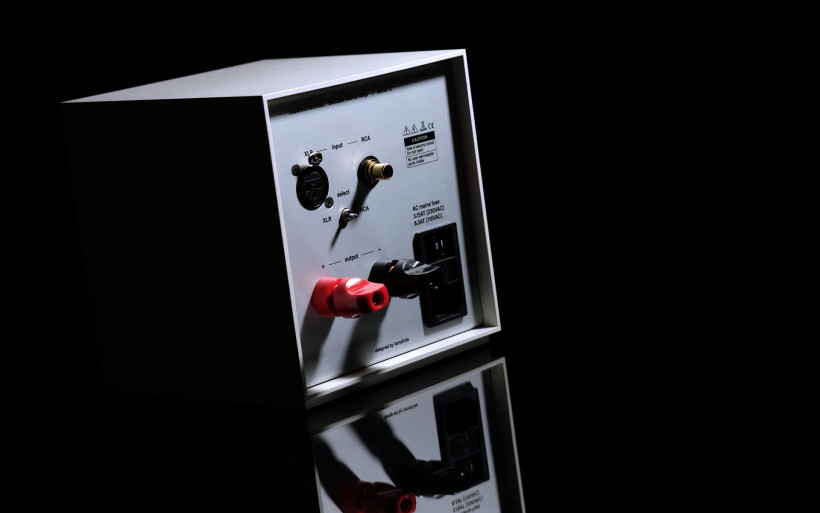 At this point the STA-200 had to step down and make room for the Kinki Studio EX-M1. The latter was put up against today’s as an integrated affair. This naturally involved Pro iDSD’s regulated analog outs defeated in case of the Chinese and engaged for Italian cubes. It’s tempting to label the EX-M1’s resistor ladder volume control as superior over a volume pot in iFi’s DAC. But to properly investigate this subject, I’d have to send my EX-M1 to its maker for a ‘+’ mod, which would add one line level route directly to its power amp. In any case, listed conditions are the reason why I’d take the next part of the story with a pinch of salt.
At this point the STA-200 had to step down and make room for the Kinki Studio EX-M1. The latter was put up against today’s as an integrated affair. This naturally involved Pro iDSD’s regulated analog outs defeated in case of the Chinese and engaged for Italian cubes. It’s tempting to label the EX-M1’s resistor ladder volume control as superior over a volume pot in iFi’s DAC. But to properly investigate this subject, I’d have to send my EX-M1 to its maker for a ‘+’ mod, which would add one line level route directly to its power amp. In any case, listed conditions are the reason why I’d take the next part of the story with a pinch of salt.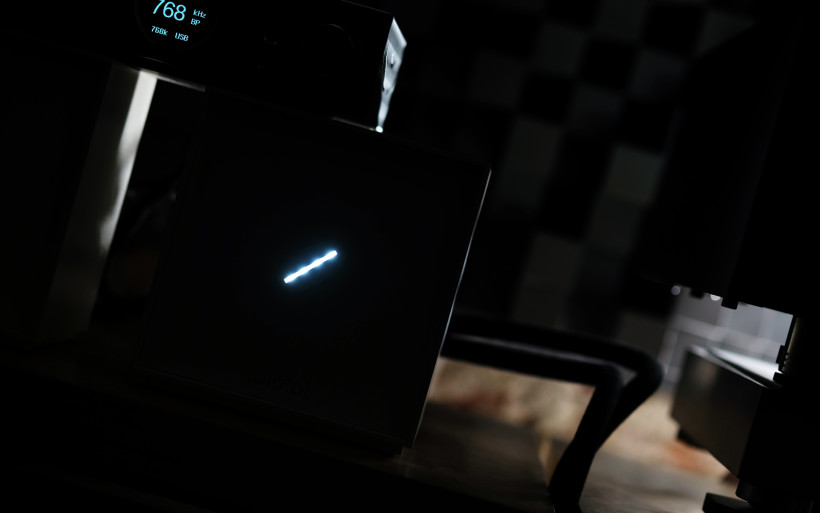 More than a year ago Kinki Studio EX-M1 emerged as a true power house. It made short work of my far pricier Trilogy 925 with the same load in form of Boenicke W8 I owned back then. The Chinese stomped the Brit on scale, speed, slam, openness and tonal evenness. The EX-M1 simply had means to better compliment these Swiss boxes, whereas with the W11 SE+ the status quo didn’t change. Audiodinamica BeCube sounded rounder, calmer, denser, less openly and less detailed versus the wilder, leaner, spatially even bigger and bolder Kinki. The latter’s blows were less polite, more visceral and as equally tectonic on sheer reach. The silver integrated rendered these two mono amps as somewhat smaller and gentler, but ditched some roundness and warmth along the road to secure extra points on air amount and insight. Simply put, on on-stage volume, slam and the lot Italian cubes landed against the Chinese where the STA-200 positioned itself against them.
More than a year ago Kinki Studio EX-M1 emerged as a true power house. It made short work of my far pricier Trilogy 925 with the same load in form of Boenicke W8 I owned back then. The Chinese stomped the Brit on scale, speed, slam, openness and tonal evenness. The EX-M1 simply had means to better compliment these Swiss boxes, whereas with the W11 SE+ the status quo didn’t change. Audiodinamica BeCube sounded rounder, calmer, denser, less openly and less detailed versus the wilder, leaner, spatially even bigger and bolder Kinki. The latter’s blows were less polite, more visceral and as equally tectonic on sheer reach. The silver integrated rendered these two mono amps as somewhat smaller and gentler, but ditched some roundness and warmth along the road to secure extra points on air amount and insight. Simply put, on on-stage volume, slam and the lot Italian cubes landed against the Chinese where the STA-200 positioned itself against them.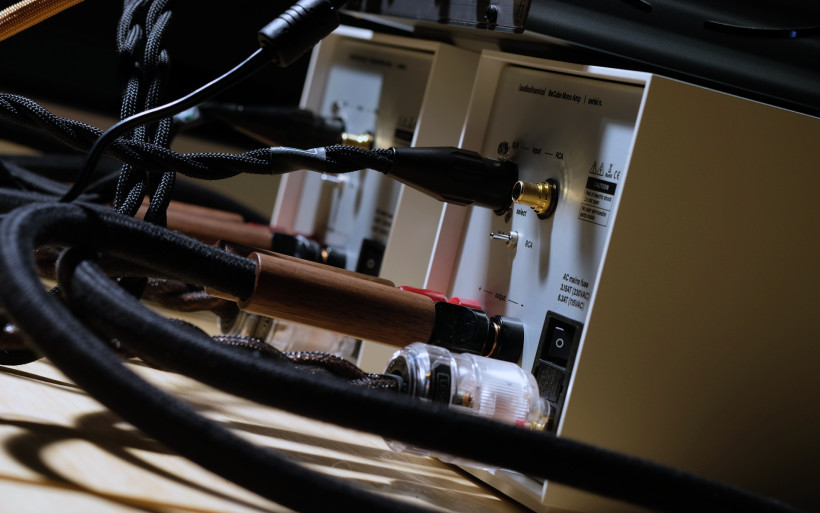 It’s worth to take into account that, of all hardware I had nearby, the Kinki ticked the most check boxes with the W11 SE+. This deck’s higher score on synergy was the clear advantage. Still, in this context Audiodinamica’s loaners didn’t collapse against the EX-M1, that was the takeaway. If anything, these cubes emerged as less fitting match for the W11 SE+, albeit still very much worthwhile and far from inferior.
It’s worth to take into account that, of all hardware I had nearby, the Kinki ticked the most check boxes with the W11 SE+. This deck’s higher score on synergy was the clear advantage. Still, in this context Audiodinamica’s loaners didn’t collapse against the EX-M1, that was the takeaway. If anything, these cubes emerged as less fitting match for the W11 SE+, albeit still very much worthwhile and far from inferior.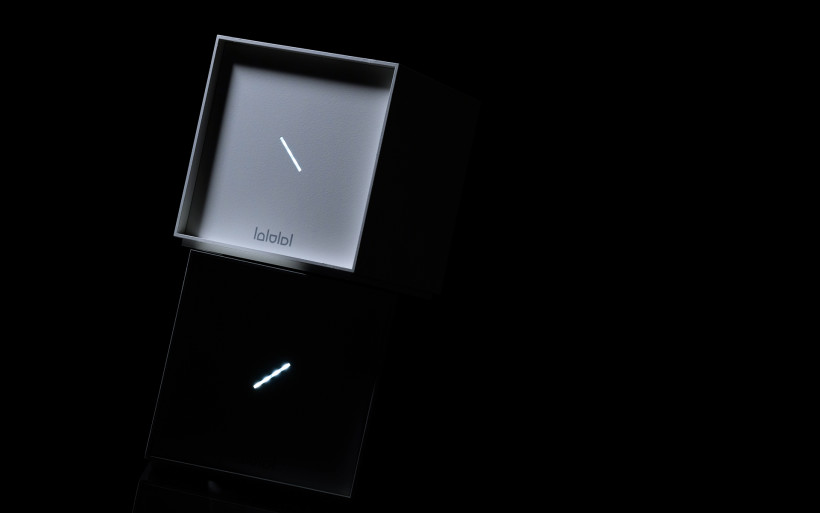 At this stage I badly wanted to know the outcome of today’s service in the big kit; fidata HFAS-S10U, Lampizator Pacific, Thöress DFP and sundry accessories on daily duty at my place. In short, this review’s white boxes didn’t disappoint. My main DAC and Reinhard’s line stage are inherently very fast, snappy, open and exceptionally resolving products, capable of truly stunning euphonic acts presented on unrestrained complex landscapes. This set of virtues naturally complimented the BeCube’s voicing to up the ante on hi-res and tone down the cuddly part. Overall bloom decreased yet moisture went up. Outline roundness faded and more firm sketches stepped in. Textural tissue became of more complex, finer and more insightful grade. Punches previously clearly marked and calm, now morphed into quicker more powerful very much unexpected jabs. The new meta was as clear as it was foretold.
At this stage I badly wanted to know the outcome of today’s service in the big kit; fidata HFAS-S10U, Lampizator Pacific, Thöress DFP and sundry accessories on daily duty at my place. In short, this review’s white boxes didn’t disappoint. My main DAC and Reinhard’s line stage are inherently very fast, snappy, open and exceptionally resolving products, capable of truly stunning euphonic acts presented on unrestrained complex landscapes. This set of virtues naturally complimented the BeCube’s voicing to up the ante on hi-res and tone down the cuddly part. Overall bloom decreased yet moisture went up. Outline roundness faded and more firm sketches stepped in. Textural tissue became of more complex, finer and more insightful grade. Punches previously clearly marked and calm, now morphed into quicker more powerful very much unexpected jabs. The new meta was as clear as it was foretold.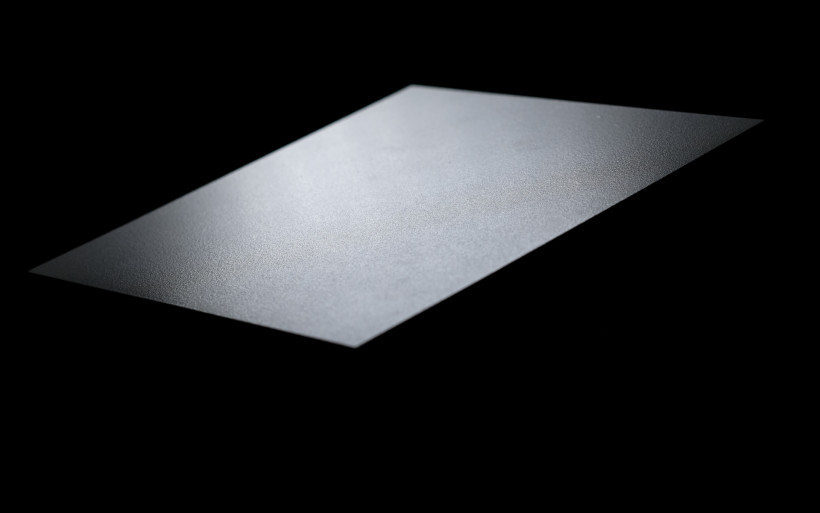 Audiodinamica BeCube seen in setups such as mine, even significantly geared down, is a very unlikely scenario. But these monos’ ability to make room for upstream hardware’s input was the key thing noted and a big plus. Top shelf speaker cables, synergistic floorstanders and quality power components surely elevated this product’s performance. Its customers won’t go as far as I did. However, my privy investigation in the big rig was conducted mainly to map how far this writing’s monos could scale up without being seen as bottlenecks. ‘Truly far’ was the clear answer, the prosecution rests its case, it’s high time to wrap it up.
Audiodinamica BeCube seen in setups such as mine, even significantly geared down, is a very unlikely scenario. But these monos’ ability to make room for upstream hardware’s input was the key thing noted and a big plus. Top shelf speaker cables, synergistic floorstanders and quality power components surely elevated this product’s performance. Its customers won’t go as far as I did. However, my privy investigation in the big rig was conducted mainly to map how far this writing’s monos could scale up without being seen as bottlenecks. ‘Truly far’ was the clear answer, the prosecution rests its case, it’s high time to wrap it up.
Summary
At first glance Audiodinamica BeCube asks itself to be labeled as a domesticated mainstream audio appliance far beyond heavyweight enthusiasts’ scope. Its visuals and topology discard pretty much everything this bunch is after; sizeable frames, spine-shattering mass and heat significant enough to keep one warm during winter. Nonetheless, the inconspicuous Italian reached as high as this lot on seriousness, but did so via different means and sane coin on top of that. That’s this story’s main twist.
Italian monos are nicely put together, light, compact, pleasantly cool and instantly operational, whereas their sharp looks subject to extensive custom options up the ante on compliance with one’s living room décor. Audiodinamica’s own online shop removes middlemen and their margins from the equation, which translates to prices in check and extra points on business cleverness. If any of listed attractors had strings attached, I didn’t get the memo.
Audiodinamica BeCube proved me that class D is the ticket to stout power dressed in a petite affordable package, and also stomped on the outdated stereotype of this topology as a lifeless drive feasible exclusively for woofers. Today’s white cubes behaved very much alive, but a spot on balance between form, price and sonic performance emerged as their core virtue. At times good things come to us wrapped in small inconspicuous boxes priced to sell, don’t they? ‘Till next time!
Associated Equipment:
- Amplifier: Kinki Studio EX-M1, NuForce STA-200
- Preamplifiers: Thöress DFP
- DAC: LampizatOr Pacific (KR Audio T-100 / Living Voice 300B + KR Audio 5U4G Ltd. Ed.), iFi Audio Pro iDSD
- Transport: fidata HFAS-S10U
- Speaker cables: Boenicke Audio S3
- Interconnects: Audiomica Laboratory Erys Excellence
- Power components: Gigawatt LC-3 EVO -> PC-3 SE EVO+, Gigawatt PF-2 + Gigawatt LC-2 MK2 + Forza AudioWorks Noir Concept/Audiomica Laboratory Ness Excellence/LessLoss C-MARC
- Rack: Franc Audio Accesories Wood Block Rack
- Music: NativeDSD
Retail prices of reviewed components in EU (excl. tax):
- Audiodinamica BeCube: €2’048/pr
Manufacturer: Audiodinamica


